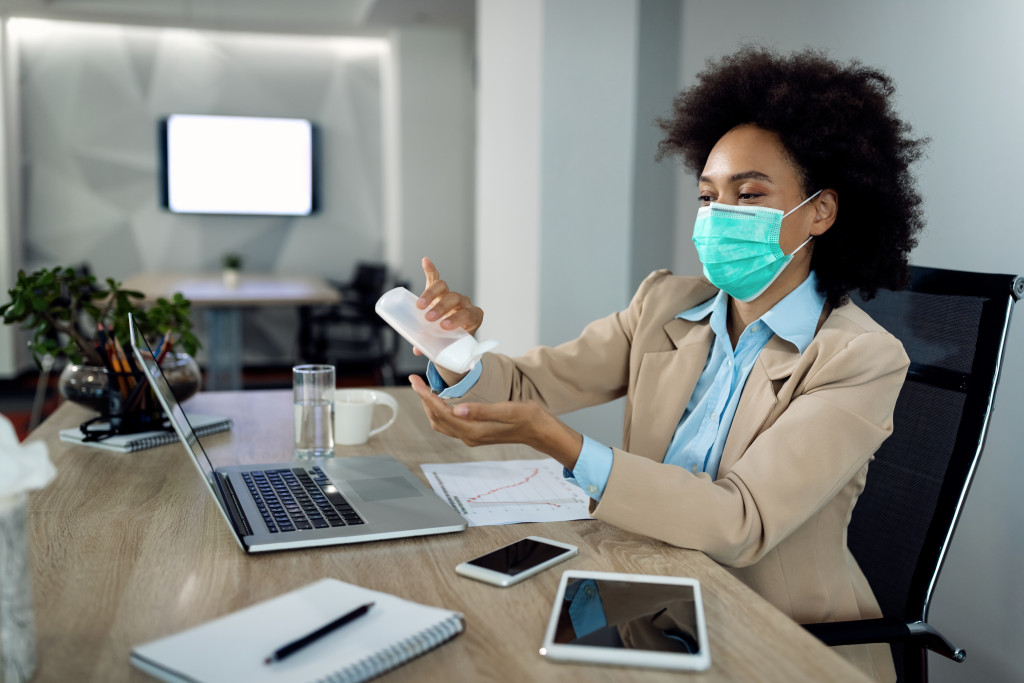For any business, at any time, it is essential to keep employees motivated and, therefore, loyal, and highly productive. This brings in maximum profits beneficial to the entire company as these enable higher salaries and benefits for everyone.
Companies with a high turnover of employees lose money in the process. There is a high cost involved in recruiting, hiring, and training the right talent. It takes time for them to learn the ropes and reach optimum productivity. In the meantime, other team members usually have to share the load, decreasing their production.
With the COVID-19 pandemic, there has been added pressure on businesses. In 2020, many had to close temporarily during lockdowns. Many had to pivot operations to remote work for employees. In 2021, with the vaccination rollouts, many businesses are starting to go back to physical workplaces. A study by Deloitte in April 2021 showed that 64 percent of companies intend to have workers return to physical workspaces this year. It is now more important than ever to protect the health of returning employees to prevent them from getting infected and to restart the momentum in the workplace.
Mandatory Vaccination and Testing
Fortune reports that many major companies are requiring all returning employees to get vaccinated. Some of these companies are Amtrak, AT&T, Bank of America, CNN, Deloitte, Facebook, Goldman Sachs, Google, Johnson & Johnson, Microsoft, Moderna, Netflix, Pfizer, Saks Fifth Avenue, Uber Technologies, United Airlines, Walt Disney, and The Washington Post. Many others are following suit.
Some of the companies give employees who do not want to get vaccinated the option to continue working from home so as not to be terminated. For employees who cannot be vaccinated for medical or religious reasons but must work in the physical workplace, most companies require submitting weekly COVID-19 tests with negative results.
Companies need to determine the best COVID test accuracy and require all employees to use this. The Food and Drug Administration or FDA warns that there are some false-negative results from tests. If the person is experiencing symptoms, a negative test result alone must not rule out the possibility of infection. Employees who have symptoms must strictly stay at home for the required minimum of 14 days.
Other Workplace Safety Measures

Workplaces should have body temperature sensors at the entrance. This will screen employees and guests who are running a fever. Many companies only allow fully vaccinated visitors.
Workplaces that receive guests must have an area for visitors, completely separate from most of the employees. Guests must be required to wear masks and to observe physical distancing. Limit interactions with visitors to employees that need to serve their needs. Install physical barriers such as polycarbonate shields between employees and guests.
Before employees are scheduled to return to work, the entire workplace must be thoroughly cleaned and sanitized. Returning employees must be trained on how to keep the premises clean. There must be sanitizing products on workstations and employees must routinely sanitize surfaces and their hands as they go. Sanitizers must have the required 60% ethanol or 70% isopropanol alcohol content.
Masks must still be worn in the workplace. Workstations must be rearranged to provide a distance of six feet between them now that the rate of COVID-19 Delta transmission is high across the country. This is the same distance provided between middle school students in areas with a high transmission rate.
Companies must provide medical benefits for employees, not only for those who become infected with COVID-19, but also to strengthen the immune system of everyone as a preventive measure. It is also best for companies to provide mental health support. The pandemic is stressful for everyone, and emotional and mental health issues significantly impact productivity.
Inclusivity for Remote Workers
Companies must not neglect the well-being of employees who continue to work from home. For some companies, remote work is still the norm for the majority of employees. These employees must also have access to benefits providing preventive and curative health services and mental health support.
Many employees working from home have difficulty juggling work tasks with childcare and the supervision of distance learning for school-age children. They also find it challenging to strike a balance between work hours, home tasks, and rest and recreation.
Many employees who work from home state that having flexible work hours is a great help in managing their time. They can schedule their work around childcare, study supervision, and home tasks. With such scheduling, they can devote more concentrated hours to work. This is more productive than multitasking.
The pandemic brings many challenges, but companies can adapt by being creative in prioritizing workers’ needs. After all, workers are the backbone of any company.



